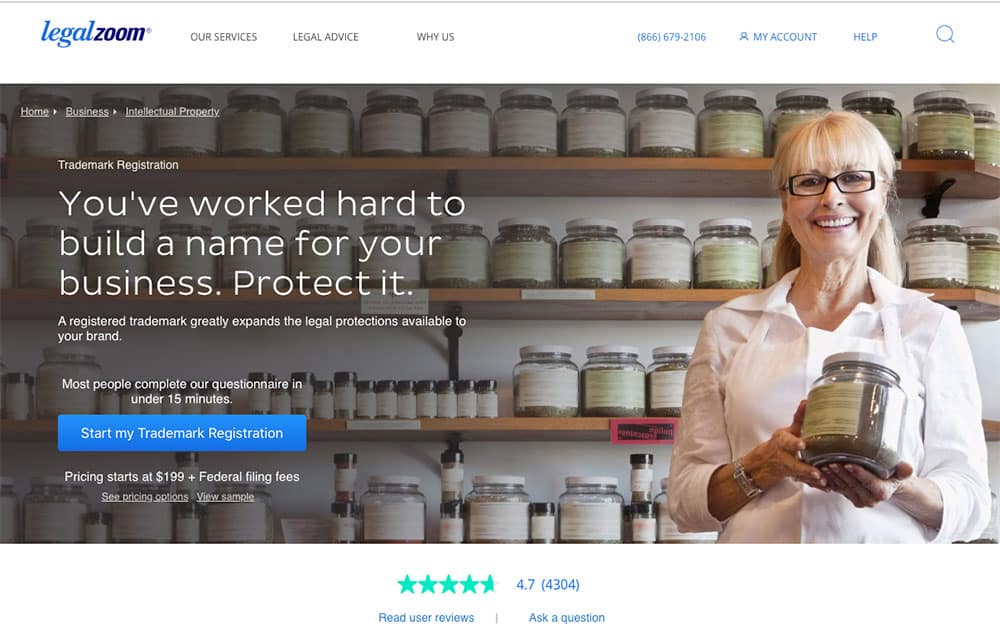This is a guest article contributed by Lori Wad.
Feeling a bit confused by trademark registration? You’re not alone.
Whether you’re a small business owner, a solo entrepreneur, or part of a developing start-up, it’d be worth your while to learn about trademarks now rather than later. In the end, it probably isn’t as confusing as you think and it could even help out your brand in the future.
Below you’ll find some information about trademarks and the registration process as well as how to keep tabs on your trademark.
What’s a Trademark?
A trademark can be a mark that represents your business. It’s a form of intellectual property that can take the form of a brand name, logo, design mark, or expression. A telltale sign of a trademark is a superscript TM symbol right after a brand name or logo. This is how it looks:  .
.
A trademark can belong to a business or a personal brand that is run by just one individual. You see trademarks regularly on the packaging, websites, or corporate documents. Those two little letters let you know that this is a piece of intellectual property, something that the brand invested in because they believed in what they were doing.
Why trademark your name, logo, tagline/slogan or services?
If you’re serious about your business, then it is in your best interest to secure a trademark. A registered trademark can include your company name, slogan, specific services, and/or logo. The peace of mind that comes with having a trademark, as well as the clout that it gives your business, is worth the investment.
It’s easy for smaller businesses to write it off as something that’s nice to have but not necessary. This attitude could end up biting them later on as they are leaving their companies open to infringement. They say that mimicry is the greatest form of flattery but as a business person, you don’t want anyone trying to operate under the guise of being your company.
If others were to pass off their goods and services like yours, what kind of effect would that have on your clients? You would probably lose their trust or, at the very least, confuse them. Consistency is key in business and that means keeping a regular brand image in your marketing, products, and interactions with customers. Infringement can seriously mess that up.
That’s where a registered trademark can help. With a registered trademark, you have the power to take legal action against anyone who tries to use your business name as their own. It can be the difference between securing your reputation with customers and becoming just another muddied small brand in a saturated market.
How to Register a Trademark for a Logo
When you decide to apply for trademark registration, you’ll need to do so by adhering to the legal process set forth by the United States Patent & Trademark Office (USPTO). You can hire an attorney to represent you or you can go about the process on your own. Before you can register a trademark, you should be able to precisely identify your business’s purpose, including the nature of its products and services. You should also be sure that the name you’re choosing to apply with is not already in use by another entity. Mistakes such as these can delay the application process, which is why some businesses choose to hire an attorney.
Once you have decided which name(s), logo(s), and/or service(s) you wish to trademark and you’ve checked the USPTO’s Trademark Electronic Search System, you can review the registration timelines and fees. Timelines will vary depending on what kind of company you are and where you’re filing from. Fortunately, all of this is laid out on the USPTO’s website. As for fees, the initial trademark filing fee ranges from $225 to $400 depending on the class of goods. You’ll also be required to make your payment at the time of filing so come prepared. The application can be done online too.
If your business is not located in the United States, then your application process is going to vary. First of all, you will need the support of a U.S trademark attorney to serve as your representative to the U.S. Patent & Trademark Office. These applicants will probably need to show additional documentation and they have the choice of using the Madrid Protocol (an international trademark system that includes the U.S.) or an attorney to file.
You can also use a service like LegalZoom to facilitate & streamline the process.
Things to Remember
This may be a lot of information but it’s important and it’s better to learn it now than discover it later the hard way. Now that you know more about how the trademark registration process works, there are a few more details that you should keep in mind.
Once the application procedure is complete and you have had your trademark approved, you can set your focus on monitoring your trademark from time to time. You don’t have to check on it every day but a monthly review will let you know if anyone is trying to register your trademark as their own. By searching through the USPTO’s trademark database, you can see the company names that are currently going through the trademark application procedure. New names that enter this database can be disputed for 30 days, including yours when you file. This means that checking the database every month will help you keep ahead of any infringement risks.
Hopefully, these tips helped to clarify trademark registration and its importance a bit more.
—
Author’s bio: Lori Wade is a journalist from Louisville. You can find her on Twitter & LinkedIn.

No comments:
Post a Comment